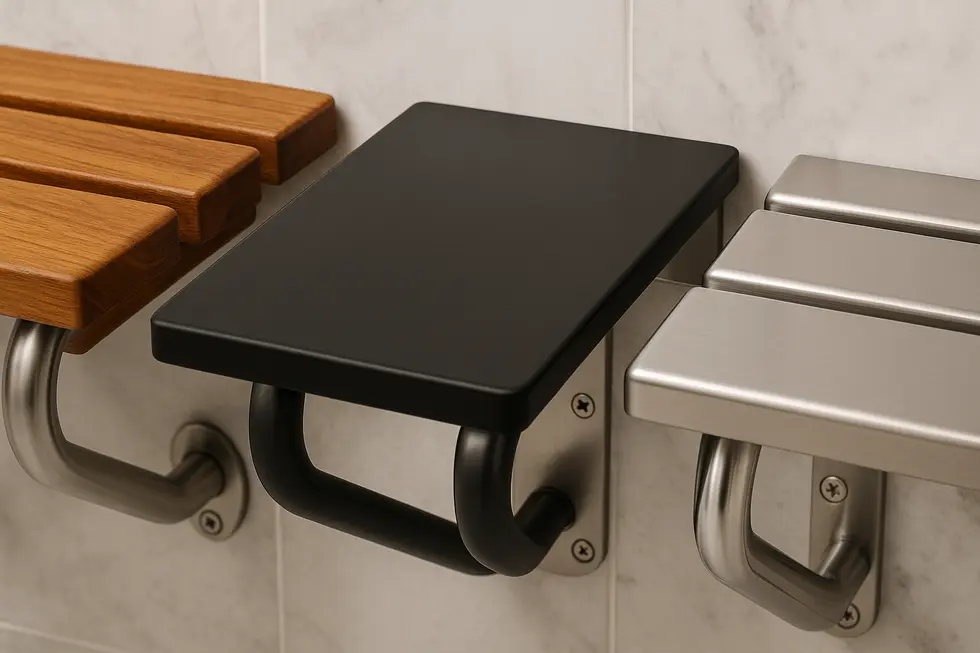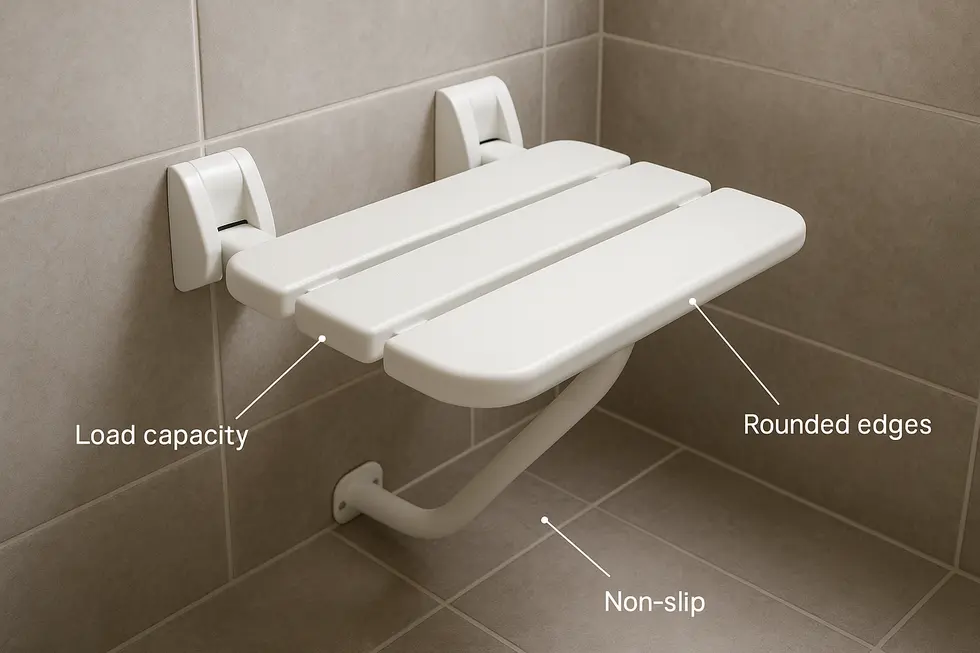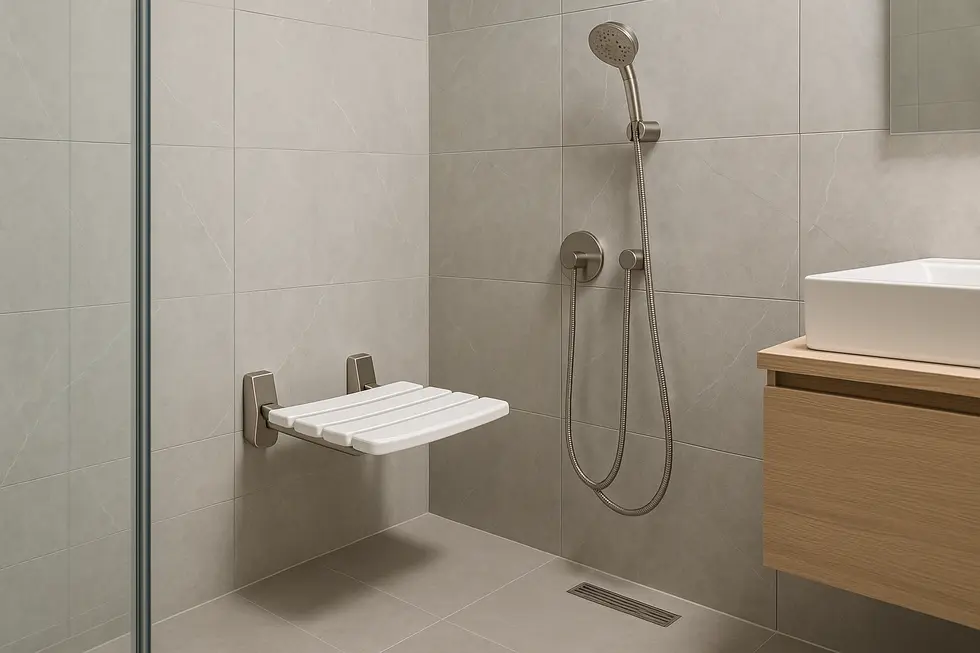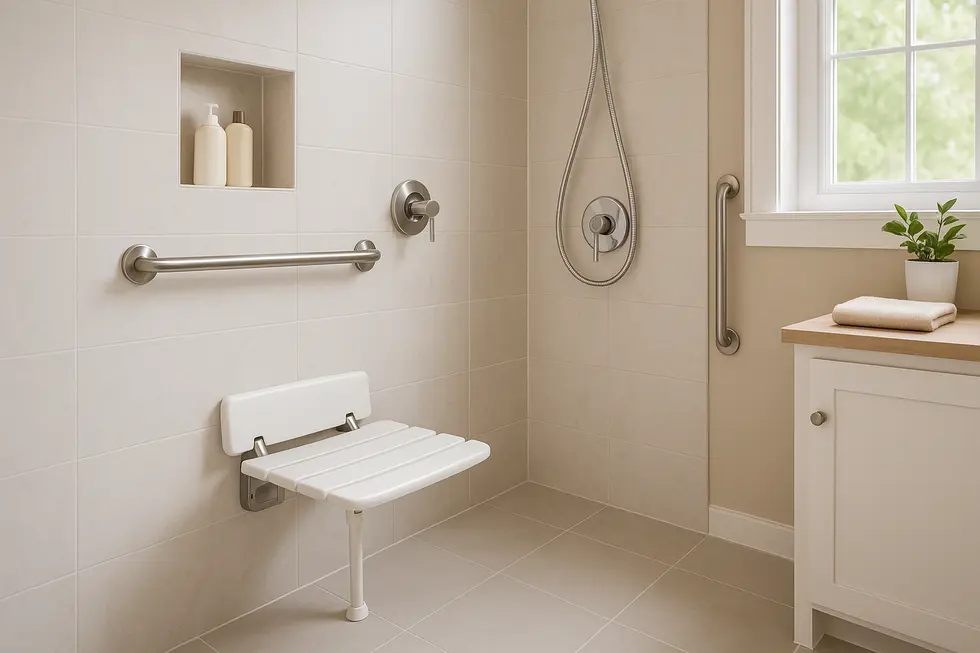Shower Seat
Choosing the Right Wall-Mounted Shower Seat for Your Family’s Needs
Wall mounted shower seat comparison is essential when choosing a practical solution for families seeking safety and efficient use of space in the bathroom. These seats provide essential support for elderly or mobility-challenged family members and contribute to an organized, clutter-free environment. Examining the materials’ durability, safety features, ergonomic design, and the latest market trends will guide your decision in selecting the best shower seat to meet your family’s needs.
Choosing What Lasts: A Deep Dive into Materials and Durability of Wall-Mounted Shower Seats

Every wall-mounted shower seat, no matter how sleek, lives in a harsh micro-climate: hot water, soap residue, and constant humidity attack surfaces day after day. The material you choose therefore determines not only how the seat looks on installation day but how it performs ten years later. Stainless steel remains the backbone of most premium frames because chromium and nickel create a passive layer that resists rust. That invisible armor lets a properly anchored seat shoulder 450–500 lbs without flexing or pitting. When a seat eventually fails, it is rarely the steel—it is the surface panel or the hardware that gives way.
Phenolic resin answers that challenge with laboratory precision. Formed under heat and pressure, the resin sheets are non-porous, so water and shampoo cannot creep inside to swell or distort the panel. Care is almost effortless: a quick pass with mild detergent removes soap scum and bacteria, making phenolic a favorite in hospitals and boutique hotels alike. While its monochrome palettes feel utilitarian to some homeowners, slim bevels and radius corners soften the commercial vibe without sacrificing hygiene.
For those who crave warmth underfoot, teak adds a spa-like touch. Natural oils repel water, and the wood’s tight grain discourages mildew. Over time, teak weathers to a dignified silver unless oiled back to its original honey tone—a ritual many owners enjoy. However, periodic sanding of battens and re-oiling edges are essential to keep splinters at bay, so teak best suits users willing to trade minimal maintenance for organic beauty.
Emerging composite slats promise the best of both worlds: lighter than phenolic, more color-flexible than wood, yet rigid enough to resist sagging. Because long-term moisture testing is still underway, buyers should verify independent cycle-life data before embracing the newest lines.
When comparing models, match frame metal to load requirement, surface panel to cleaning habits, and finish to décor. An informed choice prevents corrosion seams, delamination, and the wobble that undermines safety. For a step-by-step look at how different materials integrate with fold-up hinges, our in-depth folding wall-mounted shower seat guide illustrates real-world installations.
Beyond Load Limits: How Safety Engineering and Ergonomics Shape Today’s Wall-Mounted Shower Seats

A shower seat’s promise of security is only as good as the engineering that underpins it. Modern wall-mounted models begin with substrates that shrug off constant humidity: sealed teak slats repel mildew, while dense phenolic panels resist swelling or cracking even after thousands of thermal cycles. Beneath these surfaces, stainless-steel or aluminum frames are welded—or in high-end units, laser-cut in one piece—to eliminate weak joints. Manufacturers routinely test frames to two or three times their stated load rating, yet savvy shoppers still look for clear, permanently etched markings that confirm compliance with ADA or EN 12182 thresholds.
Weight capacity, however, is just the entry ticket. True bathroom safety also considers dynamic forces: the abrupt push when a user lowers themselves, the lateral torque created by a caregiver’s assistance, or the vibration of power-spray showerheads. Lift-assist hinges now incorporate gas pistons that counterbalance up to 70 % of the seat’s mass, allowing someone with arthritis to fold the platform with two fingers. Hidden nylon bushings silence the motion and prevent metal-on-metal wear that might otherwise loosen fasteners over time.
Ergonomics bridges the gap between raw strength and everyday comfort. Slightly concave seat profiles cradle the pelvis so water channels away rather than pooling, keeping skin drier and warmer. Forward-angled front edges reduce pressure on the backs of thighs, a detail occupational therapists cite for improving circulation during longer showers. Adjustable-height brackets, once reserved for hospitals, are migrating into residential baths; installers set them at 17 inches for petite users or 19 to 21 inches for taller adults without drilling new holes.
Safety accessories increasingly integrate rather than clutter space. Some models embed grab-bar blades into the seat’s wall mounts, creating a seamless handhold that meets the 250-pound pull test yet occupies no extra real estate. Non-slip inlays—often translucent silicone—retain a sleek aesthetic while delivering barefoot traction comparable to textured tile. For a wider tour of risk-reducing innovations, see our detailed safety guide.
Ultimately, the best comparison goes beyond headline load numbers. Evaluate how each seat manages water, motion, and user fatigue together, and you’ll land on a fixture that turns a potentially hazardous corner of the bathroom into an inviting, independent space. https://www.rehab-store.com/p-teakworks4u-ada-compliant-wall-mount-plantation-teak-shower-seat.html
From Stud Finder to Showpiece: How Installation, Style, and Trends Define the Best Wall-Mounted Shower Seats

Wall-mounted shower seats have evolved from clinical accessories to must-have design elements. Installed correctly, they feel rock-solid yet disappear when folded. The first task is structural: locate sound studs or masonry before drilling. Most brackets arrive pre-drilled on 16-inch centers, so installation often means marking height—17–19 inches from the finished floor meets common accessibility codes—leveling the frame, then driving stainless lag screws into blocking. Models with integrated support legs tolerate small errors because the leg bears part of the load, a bonus in older homes where studs rarely align. DIYers wanting extra reassurance can review this concise step-by-step installation guide for tips on reinforcing drywall before tile goes up. Once anchored, the seat clips onto the bracket, and lift-assist hinges do the heavy work when folding.
Wall mounted shower seat comparison today goes far beyond utility—function should never sacrifice style, and manufacturers have noticed. Warm teak slats complement spa-like rain showers, while matte-black powder-coated frames echo industrial loft fixtures. Minimalist phenolic resin panels, only a few centimeters thick, nearly vanish against white subway tile, preserving sightlines in compact stalls. Because the seat folds flush—some models protrude less than two inches—visual clutter remains minimal, a key selling point in open-concept wet rooms. Designers increasingly mix textures: wood over brushed stainless for Scandinavian warmth, or soft polyurethane over chrome for a contemporary hotel vibe. Whatever the palette, the rule is simple: treat the seat like an accent shelf, aligning its finish with faucets or towel bars so it feels curated, not tacked on.
Wall mounted shower seat comparison also reveals how demographics are propelling innovation. An aging population wants universal design without a “medical” look, while short-term rental hosts demand accessible bathrooms that photograph well. This pressure has pushed capacities past 500 lbs and encouraged ADA-compliant heights and edge radii. Eco-conscious buyers, meanwhile, favor sustainably sourced plantation teak and recyclable aluminum frames. Expect smart upgrades next: antibacterial coatings that resist soap-scum staining and click-on cushions that swap out as fashions change.
Final thoughts
Choosing the right wall-mounted shower seat involves evaluating materials, safety features, and design trends to ensure a fit that meets your family’s needs. By understanding these elements, families can enhance safety and comfort while maintaining aesthetic harmony in their bathroom.
Experience a new standard of clean with PEGABidet—designed for comfort, safety, and independence. Join thousands who trust us to make personal care simple and dignified. Contact us at contact@pegabidet.com
About us
PEGABidet is a brand owned by L.A NEXTGEN LLC, based in California. We design intuitive, hygienic, and accessible bathroom solutions that prioritize safety, dignity, and independence. Our mission is to make personal care effortless and empowering for people at every stage of life.

